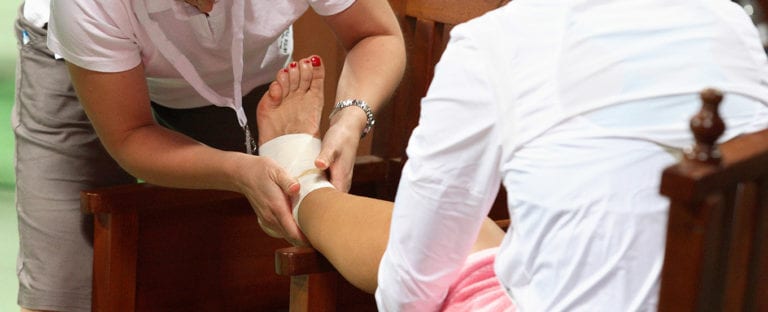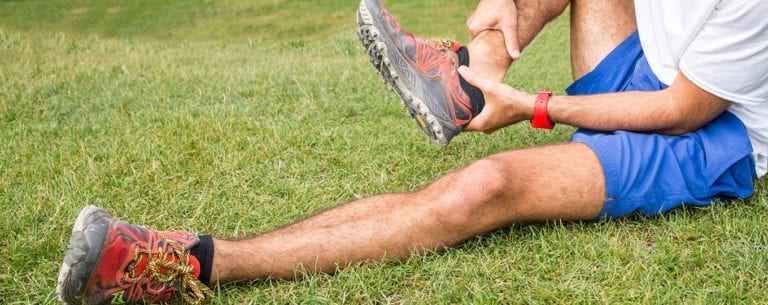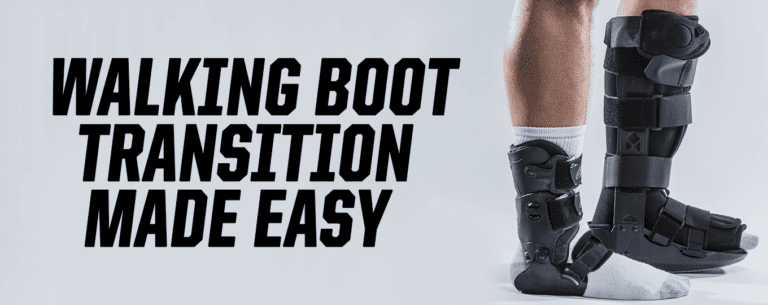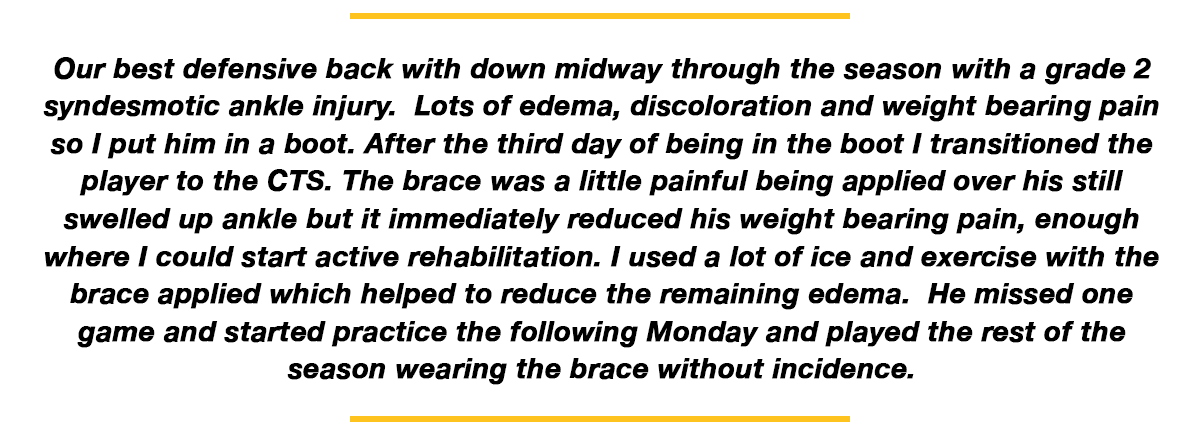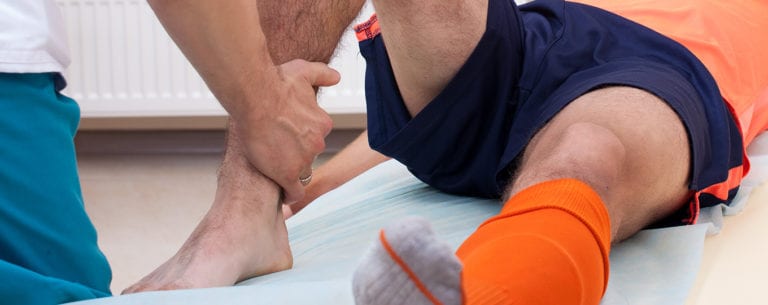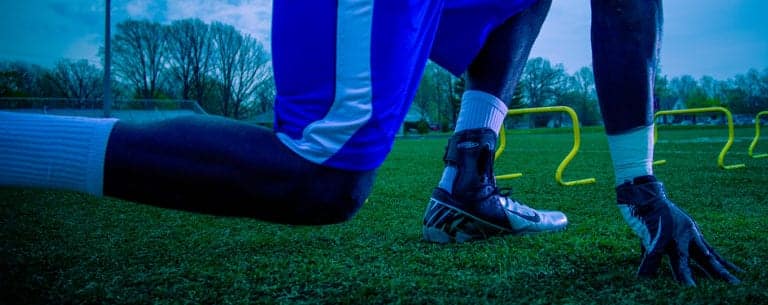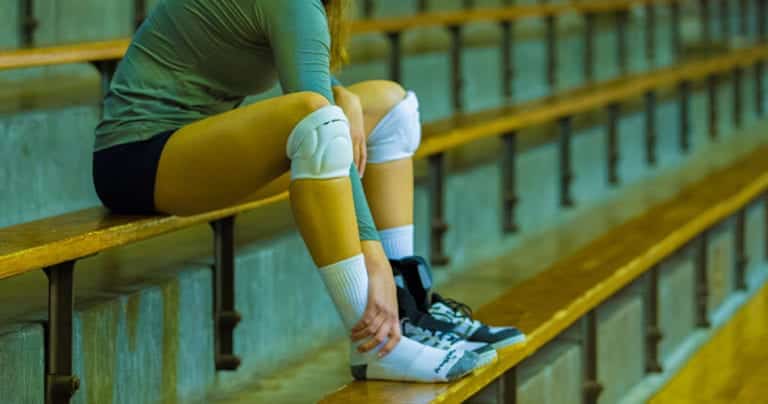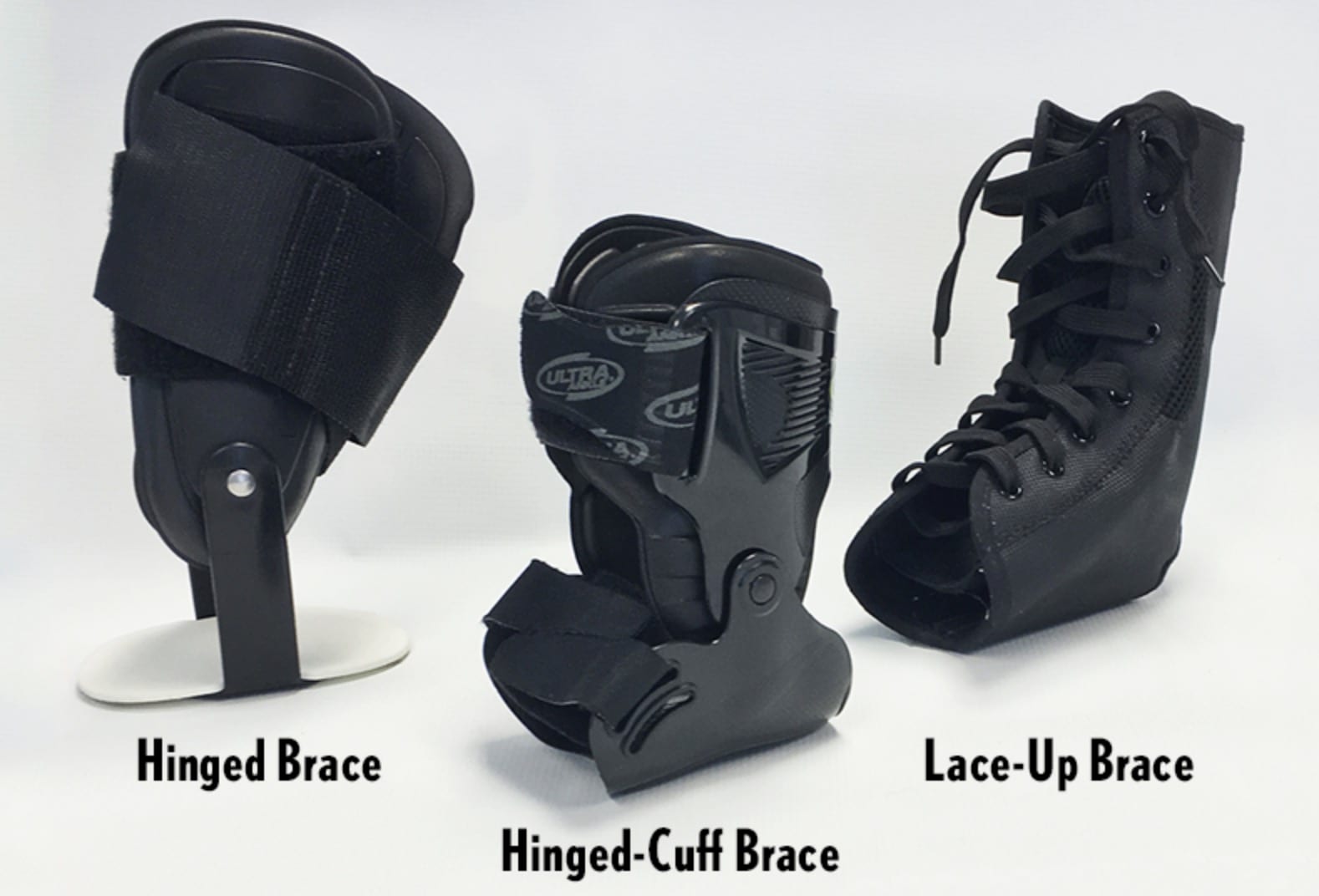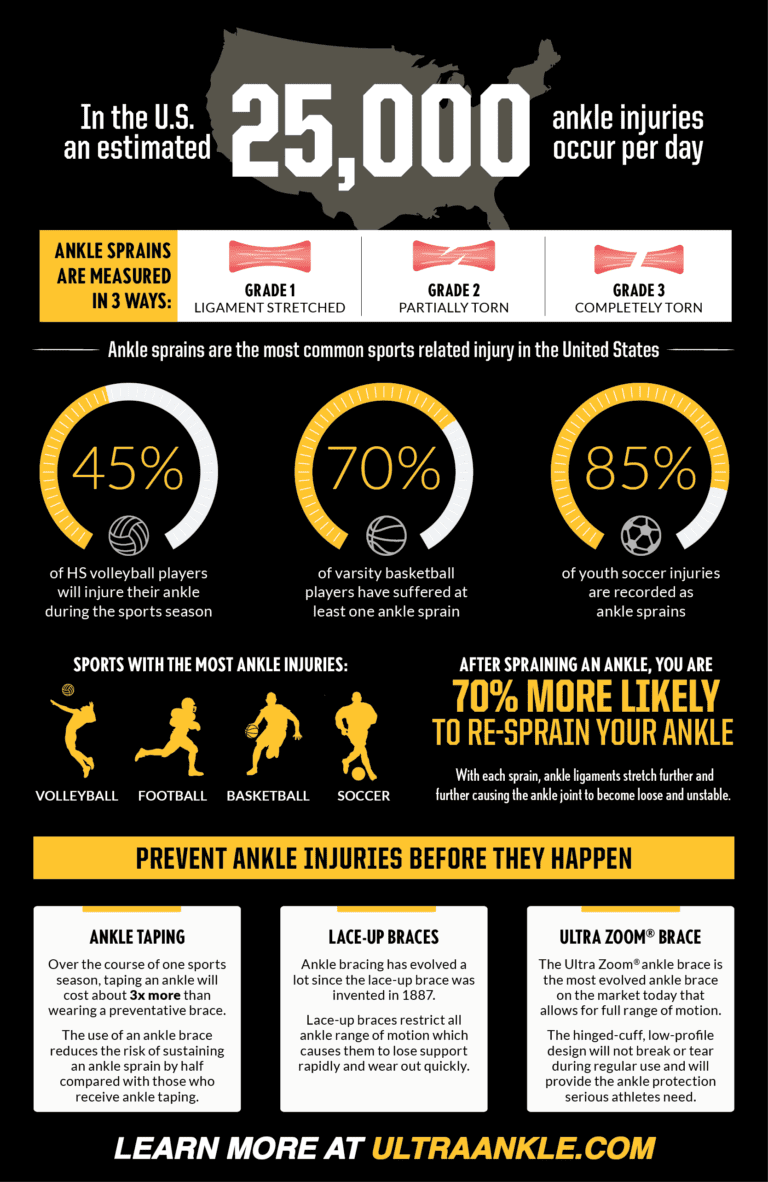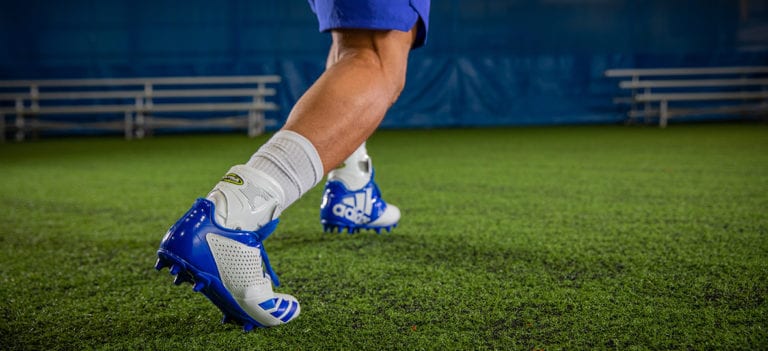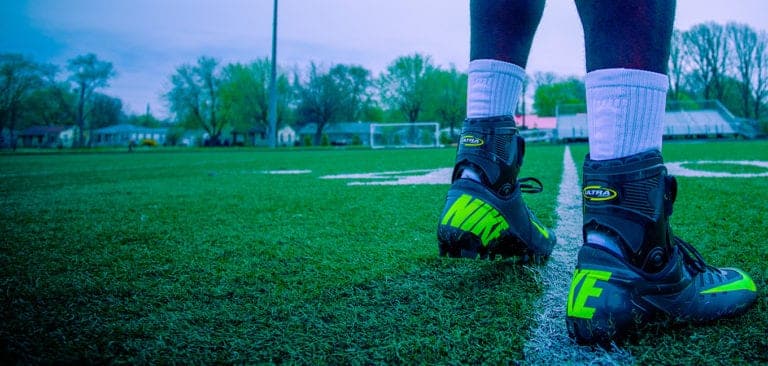
Football ankle sprains are extremely common and are often a reason why players are forced to miss multiple practices and games each season. When it comes to determining the appropriate ankle brace for football players, it’s important to start by evaluating the position you play and then the injury history you have.
Common Football Ankle Injuries by Position
Lineman – This position often suffers high ankle sprains due to linemen tackling and falling on each other’s ankles causing the ankle to externally rotate and injuring the ligaments above the ankle. With a high ankle injury, you will want a brace that has a hinged-cuff design that restricts excessive ankle rotation.
Defensive Backs, Receivers and Running Backs – These positions often injure their ankles while cutting or landing from a jump. This is known as the classic ankle sprain where the ankle turns inward, often called an “inversion” ankle sprain. For the most part, all ankle braces are designed to restrict excessive ankle inversion.
Evaluating Injury History
After learning which types of ankle injuries you might be most susceptible to as a football player in your specific position, choosing the right ankle brace for football is all about determining how much support you need versus how much mobility you want.
If you’ve had a previous ankle injury that is now healed and want to prevent future ankle sprains, the preferred ankle brace would be a preventative one which could provide moderate stability and maximum mobility. However, if you currently have a severe ankle injury and want to return to competition as soon as possible, your ankle brace should provide maximum stability and minimal mobility. Typically, the types of ankle braces preferred in this situation are referred to as acute ankle injury braces.
Preventative Football Ankle Braces
There are three main types of preventive ankle braces available on the market today:
- Lace-ups – Fabric based lace-up design with wrap around straps
- Rigid – Semi-Rigid hinge design with attachment straps
- Soft Shell – Flexible hinged-cuff design with attachment straps
Another injury prevention method that can be administered by sports medicine professionals, while not a type of brace, is ankle taping. Despite studies showing that taping an ankle is 3 times more expensive than wearing a rigid brace, there is still a time factor that needs to be calculated into having your ankle taped every time you’re ready to hit the field. After the tape is applied, it quickly loses support and is less durable over time rendering it less effective than a brace. For that reason, we are only going to compare the three preventative ankle brace types below and omit the option of ankle taping.
Lace-Up Ankle Braces
Lace-up ankle braces were first introduced in 1887 as a basic corset design that restricts all ankle range of motion. Lace-up braces of today will typically have straps that wrap around the ankle in a figure-8.
Since these braces can be laced up as tight as possible, they may give the wearer a false sense of support when they are first applied, however they lose support quickly as they resist the ankle’s natural range of motion. This is especially detrimental in football where muscle power and torque may be higher than lower impact sports. While lace-up ankle guards may feel comfortable because they are made from fabric, this fabric is also less durable and will easily rip and tear over time… not to mention absorb odors and start to smell pretty bad.
Research studies have shown that lace-up ankle braces can restrict performance by resisting the natural up and down range of motion of the ankle. This is one reason why we recommend athletes wear a hinged ankle brace for prevention purposes – this way the ankle does not weaken over time due to being held tightly in place. While all hinged ankle braces are not the same, they do provide the necessary range of motion to enhance ankle strength and performance unlike the lace-up type braces.
Overall, the lace-up ankle brace is designed for individuals on a budget needing mild ankle support that are not engaging in competitive and/or high intensity activity. Some of the better brands in this category are McDavid®, ShockDoctor®, Active Ankle® and ASO®.
Rigid Ankle Braces
Rigid, or semi-rigid ankle braces are made of hard plastic and typically have a hinge that allows full up and down ankle range of motion. The rigid hinged ankle brace was first introduced commercially in 1985. A pivoting hinge connecting the bottom foot section on both sides of the ankle to an upright section that was secured with a strap to the lower leg. The innovative hinge design offered the athlete free up and down ankle motion to run and jump without restriction. With the brace moving with the ankle, and not against it like with lace-ups, the brace stays securely in place maintaining longer-lasting ankle support.
Typically, these types of braces are only worn for a limited period of time for a couple of reasons: 1) Since the brace is rigid or semi-rigid it can be bulky to wear, and trying to fit the brace in a tight-fitting football cleat can be difficult and/or 2) The more rigid the ankle brace is the more uncomfortable it can be to wear for extended periods of time.
Hinged ankle braces are good for individuals looking for moderate ankle support to help protect or prevent the basic “low” ankle sprain or inversion (turning) ankle injury. Brands in this category are Active Ankle® and McDavid®.
Soft Shell Ankle Braces
The newest type of ankle brace to hit the market is the “soft shell” design, trademarked Performathane®. The shell of the brace is flexible and uses body heat to custom-fit to the ankle. This custom-fit creates a very comfortable and low-profile ankle brace that is easy to fit in a football cleat and be worn for extended periods of time. The concept behind the flexible shell is to get as close to the skin as possible and by doing so you can control excessive joint motion more effectively while still allowing for a little side to side natural range of motion.
Performathane® based ankle braces utilize the most advanced hinged-cuff designs on the market that were first introduced in 2000. Where hinged-only braces restrict excessive ankle turning, the hinged-cuff design restricts excessive ankle turning and twisting to help prevent both low and high ankle injuries. Hinged-cuff ankle braces offer a higher level of protection than either the lace-up or hinged only ankle brace designs can provide.
The soft shell ankle brace is best for football players who want to help prevent ankle injuries or players with mild/moderate ankle instability. These football ankle braces are extremely durable and will last multiple sports seasons.
Acute Ankle Injury Braces
When bracing an acute ankle injury, the brace needs to provide significant lower leg and ankle stability while unloading the ankle to reduce weight bearing pain. “Unloading” is the process of reducing the load, or impact to the sore ankle or at least reducing the load enough so the athlete can play with minimal or no pain. The Ultra CTS is the only ankle brace that is specifically designed to brace acute ankle injuries for return to competition using a hinged-cuff design that restricts excessive ankle turning (“inversion”) and twisting (“rotation”) to help prevent and protect both high ankle low ankle injuries.
If you, or your child, is a football player with a history of ankle injuries or you are learning more about how to protect yourself from football ankle sprains and you have any questions please send our certified athletic trainers a message or leave a comment below.
SHARE WITH FRIENDS
RECENT POSTS
POST BY TOPIC
- Acute Ankle Injuries (7)
- Ankle Bracing (33)
- Ankle Injuries (17)
- Ankle Injury Prevention (19)
- Ankle Instability (4)
- Athletic Trainers (2)
- Athletic Training (3)
- Basketball (6)
- Football (9)
- Hiking (2)
- injury (2)
- Mild/Moderate Ankle Injury (2)
- News (2)
- Osteoarthritis (5)
- Pickleball (3)
- Soccer (4)
- Sports (17)
- Tennis (3)
- Ultra 360 Lace-Up (2)
- Ultra CTS (6)
- Ultra Zoom (9)
- Uncategorized (2)
- Volleyball (8)
